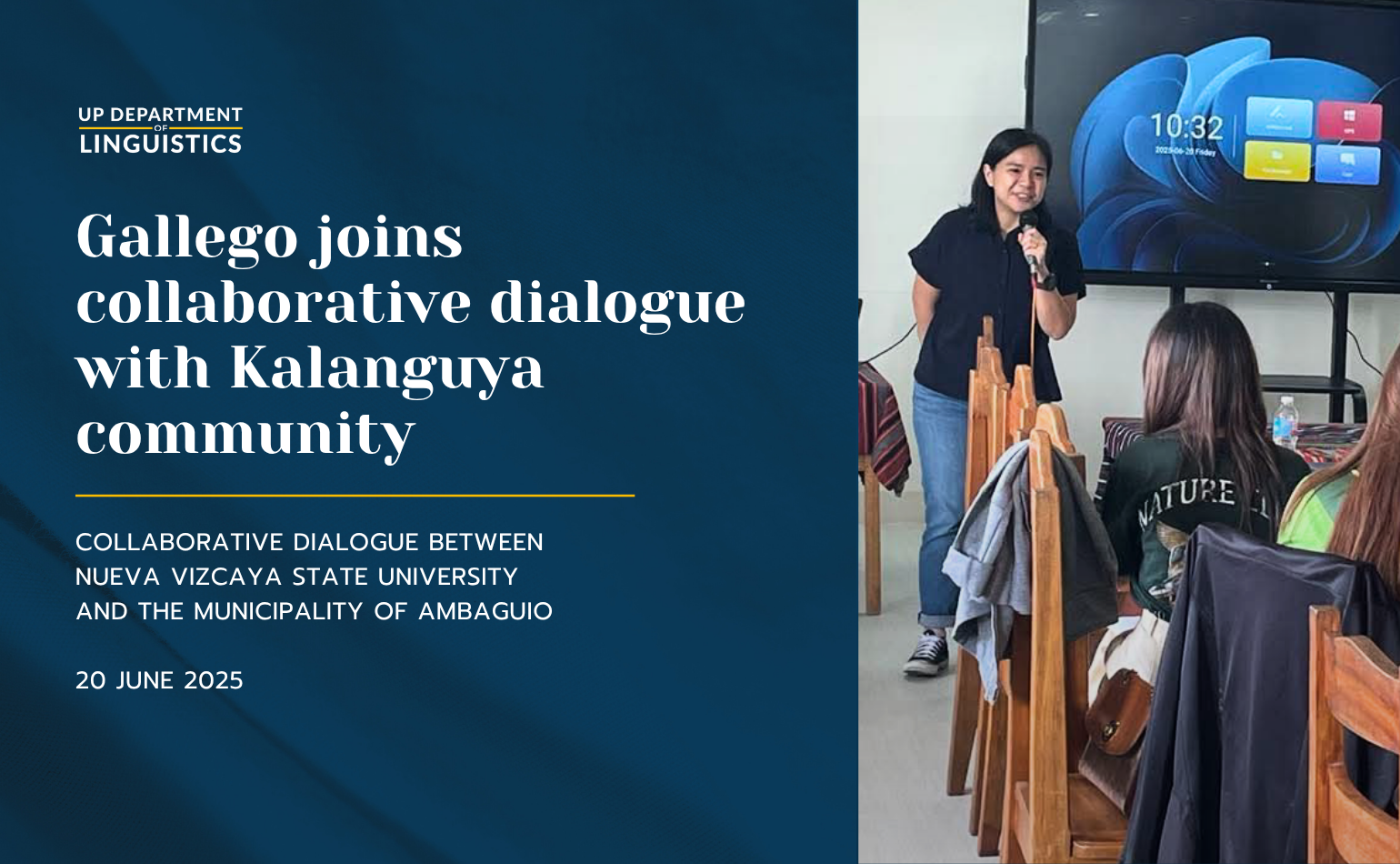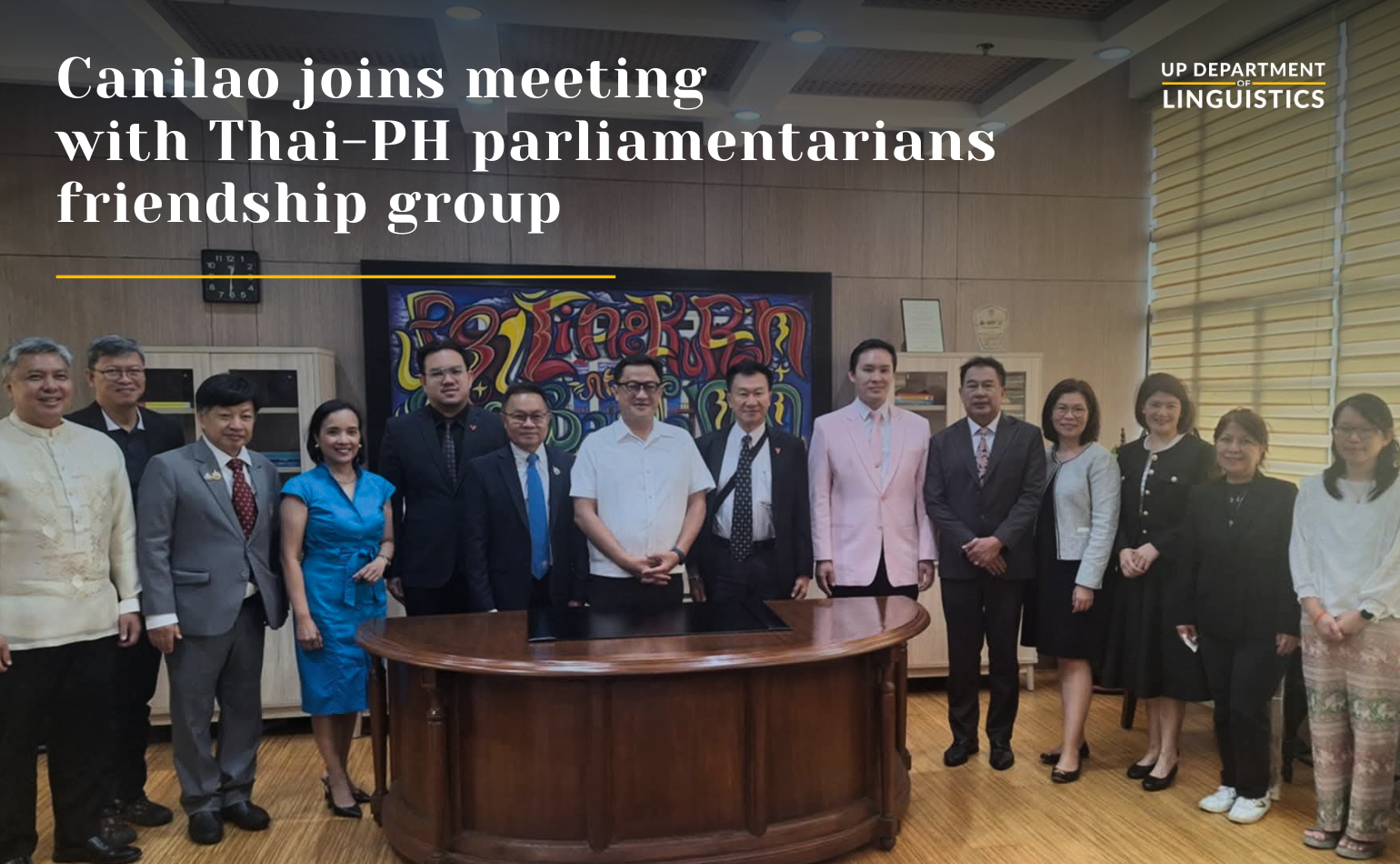
The question of how speaking more than one language affects the course and diagnosis of dementia continues to intrigue many experts. This question and its implications on Tagalog speakers were discussed at length by University of California San Francisco (UCSF) Memory and Aging Center’s Dr. Jessica de Leon in the latest installment of the Linguistics Special Lecture Series (LSLS) held last January 28, 2023. In the online lecture titled, “The Importance of Bilingual and Cross-linguistic Studies in Dementia”, Dr. de Leon discussed the latest findings in the field and her own research group’s recent work on tools that can help identify cognitive deficits in bilingual Tagalog speakers. She also highlighted why linguistics is significant in helping neuroscientists understand people with dementia in novel ways.
Dr. de Leon’s lecture was composed of three parts. In the first part, she gave a rundown on recent studies involving the relation of bilingualism and dementia. Next, she discussed what they are learning about dementia via cross-linguistic studies, and why it is important to adapt currently used tools to cater to more non-English-speaking patients. Finally, she talked about her team’s current progress in constructing a diagnostic tool–the Cognitive Assessment for Tagalog Speakers or CATS.
“Overall, there seems to be a bilingual advantage in what we call executive functioning,” Dr. de Leon said, referring to the mental processes that help people plan, focus their attention, and multitask, among other things. She characterizes the act of switching between languages as, in itself, a cognitive exercise that comes with advantages, such as an increased proficiency in differentiating between phonemes or sounds (though it may also lower performance in others). Bilingual speakers have also been found to have greater brain volume in areas associated both with executive functioning and language.
The protective capacity of bilingualism, however, is complex. According to Dr. de Leon, a study with 287 participants found that while bilingualism did indeed help to delay the onset of a type of dementia that specifically affects speech and language functions (called the Logopenic Variant Primary Progressive Aphasia or lvPPA) by around 5 years, the differences were non-significant in patients with the variant mainly affecting memory or amnesic Alzheimer’s disease. Thus, despite the literature on bilingualism’s benefits on both cognitive tasks and brain structure, more studies are needed to accurately describe its protective effects for different types of dementia patients.
In the second part of her talk, Dr. de Leon asked: ‘why do we need cross-linguistic studies in (dementia) evaluations?” To answer this, she presented the case of an assessment where clinicians ask patients to identify a photo of a beaver. “The problem is that,” she noted, “a beaver is very culturally and linguistically specific.” Therefore, even if one had reasonable proficiency in English, it is possible that a patient would fail to answer this question correctly and it might be construed as a lack of semantic knowledge of the word, and thus be seen as a sign of dementia.
She then gave examples of how her colleagues had been adapting different assessment tasks into other languages such as Spanish to probe for deficits related to dementia. In doing so, researchers have been finding some language-specific features in non-English languages that could be used to diagnose irregularities in patients’ cognitive processing.
The last part of Dr. de Leon’s presentation tackled her team’s work on the CATS, a battery of tests currently being tested for Tagalog speakers. This is timely because, despite limited studies on Asian American subgroups, research has showed that Filipino Americans suffer the highest percentage of dementia compared to other groups in the US. Together with a linguist, a neuropsychologist, and a speech pathologist, de Leon’s team is constructing a very comprehensive battery that aims to target different domains.
One of the speech and language tasks that her team developed was a motor speech exam that tested for slurring of speech (dysarthria) and difficulty in speech planning (apraxia). Knowing that Tagalog had more repeated syllables and number of syllables per word compared to English, they created sentences with more “travel” in terms of places of articulation in the mouth, resulting in the inclusion of words that resemble tongue twisters in the diagnostic test. They also asked participants to read the sentences “with emotion” to catch any differences in the prosody or intonation that participants might exhibit.
Another test that they developed more-or-less from scratch was the semantic reading task, in which they included irregular words that are used to help diagnose difficulty in word recognition. For Tagalog, a difference in stress placement in otherwise similar words (such as: búkas-bukás) could present a challenge to the cognitive processing of speakers, so the test was designed to assess deficits using these. They also developed tests for syntax comprehension, syntax production, and others which are still currently in their initial stages.
Dr. de Leon said the next steps for her team would be to continue adapting these tasks for Tagalog speakers and to correlate their findings through the use of neuroimaging. She also stressed the importance of conducting more cross-linguistic and bilingual studies, which could help in developing diagnostic tools that can be administered to provide better care to non-WEIRD (which stands for “Western, Educated, Industrialized, Rich and Democratic”) patients with neurodegenerative disease.
The lecture concluded with a productive open forum that tackled the different factors that influence the mechanisms of dementia, such as age of language acquisition, level of language proficiency, and the bias towards WEIRD societies in both research and medical care. Dr. de Leon concluded with a call for more studies and expressed a desire for more collaborations with her counterparts in the Philippines.
The recording of her talk is available at the Department’s YouTube channel.
Published by Andre Encarnacion



